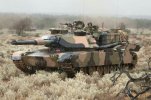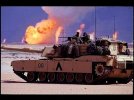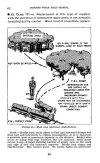it also shows where the "base" concept distorts the real logistics system, because the "trucks" that haul supplies from each base to a combat unit are actually assigned to the combat unit and dispatched for supply replenishment runs. Under the CO2 "base" concept all logistics and support items are bundled at the "base" instead of being distributed among the maneuver units.
It's in this that I have a disagreement with the "emergency resupply" concept, because those trucks used in supply runs actually are required for other transport operations -- particularly towing equipment, and transporting troops at the same time they're diverted to run emergency supply missions.
it's because of this that I believe the "emergency supply" runs should penalize a unit which overuses them by increasing fatigue at the "base" and reducing it's capability to respond to normal operations in the same way combat units are degraded by fatigue if forced to fight without rest for too long.
While I agree with what you wrote in the 1st paragraph, and while I have doubts regarding the emergency supplies as well, I am not sure if the rest of the 2nd paragraph is correct.
I am not familiar with details of the US supply Bn concept, but the supply columns of a German division (and its subunits) should not be confused with the vehicle pool of the combat elements.
a) tow vehicles didn't necessarily have cargo space (eg. Kettenkrad to tow 37mm AT guns, 1t halftracks with seats for AT gun crews pulling AT guns) and were not meant for supply duties, in general
b) the vehicles of the supply columns were the prime supply movers
c) required strength sheets (KStN) usually carried a supply section, where - in addition to the combat elements' tow, transport and combat vehicles - the supply vehicles were listed/specified
d) F&L were pulled with dedicated fuel trucks, means select vehicles from the supply columns, specified in the KStN;
example: a motorized mountain AT platoon (three 1t halftracks pulling three 37-mm AT guns) had 2 trucks listed in its supply train, 1 for F&L and 1 truck to hold the field kitchen
d) priority was given to ammunition, which was drawn by the regimental light columns combined by the div's QM, or (with independent Bns) by the light columns of the Bns
f) food and water were pushed to issue points behind the divisions by the Army columns, and then pulled by the div's subunits
g) only when no transport tasks were scheduled or when no transport vehicle readiness was required/ordered, then parts of the vehicle pool of the combat elements could jump in (afaik: with the focous on ammunition, lower classes - eg. food and water - had low priority), eg. in preparation of a major offensive
h) the transport truck pool of a motorized infantry formation was parked in a secure area until the troops had finished the task or until they were pulled back from the area/front; on fixed fronts, parts of the pool were probably tasked with other duties, but the units tried to save resources (fuel) and transport capacity, since there was a general lack of transport vehicles (due to the insufficient production output) and since Germany's oil production couldn't meet the military demand.
This contradicts my earlier statement that a unit would operate independently with 3-day's worth of supply. Our planning in the late 1990s and early 2000s focused on a 3-day independent mission. I assumed at that time the 3-day mission was conceived during WWII, but it actually may be a response to WWII lessons learned and the change in combat concept to increase the ability to maneuver or fight as an independent cadre against guerilla operations.
The 100-miles is what I referred to as a component of OPTEMPO. I don't think the mileage per day has changed in the raw planning, but it gets refined when developing planning packages based on different OPTEMPO combinations of attack, maneuver, and defense. These are all driven by the Army doctrine developers, and other than receiving the reports of their desires on how they wanted to conduct combat, we had little to do with refining them until we determined the burden the desire put on the logistics system.
The operational ranges of combat vehicles increased after the war. So technical progress may be another reason. The multifuel and Diesel engines that came up after the war improved the ranges quite a bit, fuel tanks grew in size, too. A Leo 1 had a cruise range of 560 km and the Leo 2 has a cruise range of 500 km. Being able to operate in the Fulda gap, in North Germany or in Iraq's deserts for 3 days has quite some merits. I am sure it's rather based on Cold War thinking than on an adaption to guerilla warfare.
In Iraq 1991, on the morning of 27 February, the 1st and 3rd Arm Div were almost out of fuel, and that was even before the end of these 100 hours of ground/armored combat. Schwarzkopf would have had to halt the advance to refill the FOBs, if the ceasefire wouldn't have been declared the following night. The advance was so fast, that the tanks and Bradleys had outdistanced the supply trucks. As a quick fix helicopters had started to haul large fuel tanks and ammo pallets, but the choppers ate up the fuel "as fast as they delivered it", as the US Army Center of Military History put it in one of their publications, because they must have operated near the max. takeoff weight limits.
The tanks had dashed 100 miles north and then 50 miles east, mostly on desert terrain, not on roads or tracks. On other terrain, say on central or Eastern Europe's lowlands (Poland, Baltics), the daily mileage would be way higher, most likely, so I could imagine that the 100-miles reference was updated at one point.


